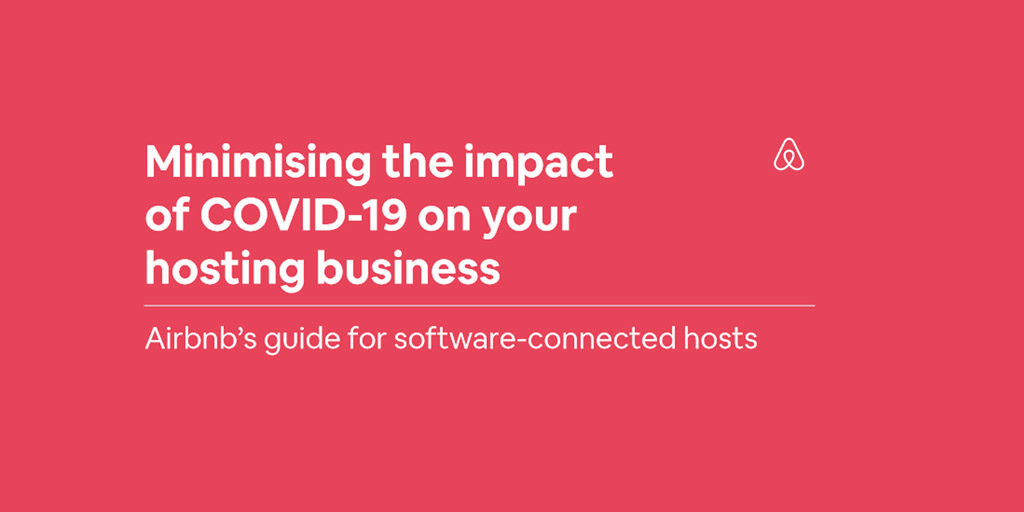Increasingly often, short-term rentals are the first choice over traditional accommodations, primarily among individual customers, but also among business customers. However, continuously growing interest and, as a result, competition, have made property owners and property management companies constantly optimize their online distribution strategies. How to do it effectively? How should the online distribution strategy for short-term rentals differ from the strategy applied by hotels?
Dynamic development of alternative accommodations
Quite obviously, short-term rentals has transformed the landscape of the tourism industry for good and forced hotels, guesthouses and other traditional accommodations to thoroughly redesign their current sales and distribution models. Originally, the redesign activities focused only on traditional facilities; at the initial development stage the apartments, given the relatively weak market competition and a more favourable pricing policy compared to hotels, did not have to be excessively customer-oriented. However, growing interest, combined with above-average rates of return on investment in short-term rentals, in a short period of time led to an abrupt increase in their number and the consequent necessity to move the existing customer acquisition strategies to a completely new level.
The market growth was fostered, on the one hand, by competitive prices and, on the other hand, by the global trend where the customers seeking uniqueness, genuineness and customized services would decide increasingly more often to stay in locations alternative to traditional accommodations – especially chain accommodations, which, in order to guarantee the same standard, were similarly equipped regardless of their location. All this translated into a great number of apartments becoming available for rent in a short period of time, especially in the most popular tourist destinations.
This is perfectly illustrated by the statistics published by the biggest players on the distribution channel market (mainly OTAs – i.e. Online Travel Agencies). Alternative accommodations already account for approx. 20% of Booking.com‘s revenues. Airbnb, the short-term rental market leader and one of the icons of the sharing economy alongside Uber, generates almost all of its revenue from short-term rentals. While the website owes its current position to the immense interest of individual customers, it has been increasingly more active in the USD 1 trillion worth business travel sector. As a result, over the last two years the number of corporate bookings has tripled and reached 15% of the total number of bookings. By 2020, the share of bookings made by companies is expected to reach 30%!
How to effectively develop the suite distribution strategy?
Operating in such a dynamically evolving market is definitely challenging; therefore numerous holiday suite owners decide to entrust their management to professionals. Today there are dozens of companies providing such services; however, they do not always succeed in fully exploiting the potential of managed properties. The reason for that is that building an effective online distribution strategy is extremely challenging a task. On the one hand, it involves extensive expertise and know-how and, on the other hand, the use of professional tools supporting the sales process automation.
While it is worthwhile drawing on good practices from the hospitality industry, it is misleading to expect that a 1:1 copy of the distribution strategies used by leading hotel facilities will yield the desired outcomes. Why being so? This is because the apartments are characterised by exceptional uniqueness. While the hotels as a rule offer at least several identical rooms (similar in size and style), it is practically impossible to find two identical apartments. This is both an asset and a major obstacle, requiring the property manager to manage the property skilfully. This is due to the fact that the number of possible options for manoeuvring is significantly limited, which means that the distribution strategy should be tailor-made each time. Given the fact that each suite constitutes a unique resource and juggle with its availability is impossible, careful and well-thought-out price management is essential as well. Excessive under- and/or overpricing may indeed have a significant impact on the RoI.
So, how to effectively manage the suite distribution? First and foremost, it is crucial to carefully analyze their potential, showcase them skilfully and select the most appropriate distribution channels. According to the number of bookings recorded by Channel Manager YieldPlanet, maximizing suite revenue goes hand in hand with maximizing the number of available sales channels. The majority of the short-term rentals we cooperate with use 4 to 6 sales channels, yet increasingly more facilities operate through 7 to 10 channels. The more channels we use, the more difficult it is to manage them. For each channel a separate strategy needs to be developed, and it should be thoroughly analyzed with respect to its profitability, the amount of commission charged by the given channel for cooperation, and other factors as well. On this basis, it is advisable to develop a proprietary online distribution strategy.
Optimally designed IT ecosystem
The management of a significant number of distribution channels involves the application of tools that will substantially enable to automate the process of managing suite prices and availability. Today it is virtually impossible to introduce all the necessary modifications and manage the calendar manually. This is especially true if we plan to establish cooperation with at least some of the leading distribution channels, such as Booking.com, Airbnb, Expedia or local booking portals. The process of multi-channel management automation can be supported by solutions that has already been used by hotels for years and widely used in the short-term rental market for some time now.
What kind of solutions are they? First of all, the PMS system (property management system), which should include the entire inventory, i.e. all managed properties. It is PMS that will monitor the current number of available properties and enter new bookings directly into the calendar. The system will also feed information on apartment’s availability into the next link in the data flow chain, i.e. Channel Manager. This system, in turn, allows to effectively manage the multi-channel sales process. Provided that the short-term rentals are being offered on several booking websites at the same time, modification of the offer and customization of prices to the current market conditions will be possible in real time from the level of one tool, without the need to log in to each channel separately.
Connecting the Channel Manager with the PMS is essential while managing the suite availability. Since each suite offers unique qualities and often it is not possible to replace it with another similar suite, it is of utmost importance that the system sends real-time information about the suite’s availability to OTA in order to prevent double bookings at the same time (i.e. overbooking).
Imagine a situation where we have available apartments whose interiors are inspired by the culture of different countries. So there is a Japanese, Chinese, American, Italian, Swedish and French suite. If a guest cares particularly to stay in a Chinese suite and they book one, but there will be an overbooking situation, i.e. another guest books the same suite at the same time, it will most likely be an issue for the suite manager; this issue will be difficult to solve or even impossible to solve in such a way as not to offend the guest who will not be able to stay in the Chinese suite. The sales strategy for this type of facilities is different than in the case of many identical rooms, as it enforces the need for detailed and careful price management and provides fewer opportunities for manoeuvring within the suite inventory.
In this particular case, it is extremely vital that the system immediately changes the status of the facility’s availability. Of course, the channel manager brings many more advantages. This translates into higher suite occupancy rates, greater control over the margins paid to the agents and huge time savings for the managers.
What is probably the most interesting for the suite managers at the moment is the cost of developing this type of infrastructure. And even though it may seem that these solutions are reserved exclusively for the biggest market players, in fact things look completely different. In most instances, investment in expensive IT infrastructure is not necessary. The presented systems are usually cloud-based solutions, settled on the basis of a fixed, monthly subscription fee or based on a commission system, which makes them available to virtually everyone.
Are you looking for a solution that will help you manage your short-term rentals? Contact us to receive an offer for the YieldPlanet Channel Manager.





